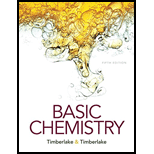
(a)
Interpretation:
The
Concept Introduction:
The atomic number represents the number of electrons revolving around the nucleus in an atom. It also represents the number of protons in the nucleus of an atom.
Metalloids are the elements that show some metallic and some non-metallic properties.
(b)
Interpretation:
The atomic number and
Concept Introduction:
The atomic number represents the number of electrons revolving round the nucleus in an atom. It also represents the number of protons in the nucleus of an atom.
In the modern periodic table, the vertical columns are known as groups and the horizontal rows are known as periods. The group of an element is determined by the number of its valance electrons and the period of an element is based on the principal quantum number of the valence shell of the element.
(c)
Interpretation:
The
Concept Introduction:
In the modern periodic table, the vertical columns are known as groups and the horizontal rows are known as periods. The group of an element is determined by the number of its valance electrons and the period of an element is based on the principal quantum number of the valence shell of the element.
Elements with 1 valence electron belong to Group 1 on the periodic table. These elements are known as alkali metals.
(d)
Interpretation:
The in metalloid in Group 3A should be determined.
Concept Introduction:
Metalloids are the elements that show some metallic and some non-metallic properties.
Want to see the full answer?
Check out a sample textbook solution
Chapter 4 Solutions
Basic Chemistry Plus Mastering Chemistry with Pearson eText -- Access Card Package (5th Edition)
 ChemistryChemistryISBN:9781305957404Author:Steven S. Zumdahl, Susan A. Zumdahl, Donald J. DeCostePublisher:Cengage Learning
ChemistryChemistryISBN:9781305957404Author:Steven S. Zumdahl, Susan A. Zumdahl, Donald J. DeCostePublisher:Cengage Learning ChemistryChemistryISBN:9781259911156Author:Raymond Chang Dr., Jason Overby ProfessorPublisher:McGraw-Hill Education
ChemistryChemistryISBN:9781259911156Author:Raymond Chang Dr., Jason Overby ProfessorPublisher:McGraw-Hill Education Principles of Instrumental AnalysisChemistryISBN:9781305577213Author:Douglas A. Skoog, F. James Holler, Stanley R. CrouchPublisher:Cengage Learning
Principles of Instrumental AnalysisChemistryISBN:9781305577213Author:Douglas A. Skoog, F. James Holler, Stanley R. CrouchPublisher:Cengage Learning Organic ChemistryChemistryISBN:9780078021558Author:Janice Gorzynski Smith Dr.Publisher:McGraw-Hill Education
Organic ChemistryChemistryISBN:9780078021558Author:Janice Gorzynski Smith Dr.Publisher:McGraw-Hill Education Chemistry: Principles and ReactionsChemistryISBN:9781305079373Author:William L. Masterton, Cecile N. HurleyPublisher:Cengage Learning
Chemistry: Principles and ReactionsChemistryISBN:9781305079373Author:William L. Masterton, Cecile N. HurleyPublisher:Cengage Learning Elementary Principles of Chemical Processes, Bind...ChemistryISBN:9781118431221Author:Richard M. Felder, Ronald W. Rousseau, Lisa G. BullardPublisher:WILEY
Elementary Principles of Chemical Processes, Bind...ChemistryISBN:9781118431221Author:Richard M. Felder, Ronald W. Rousseau, Lisa G. BullardPublisher:WILEY





